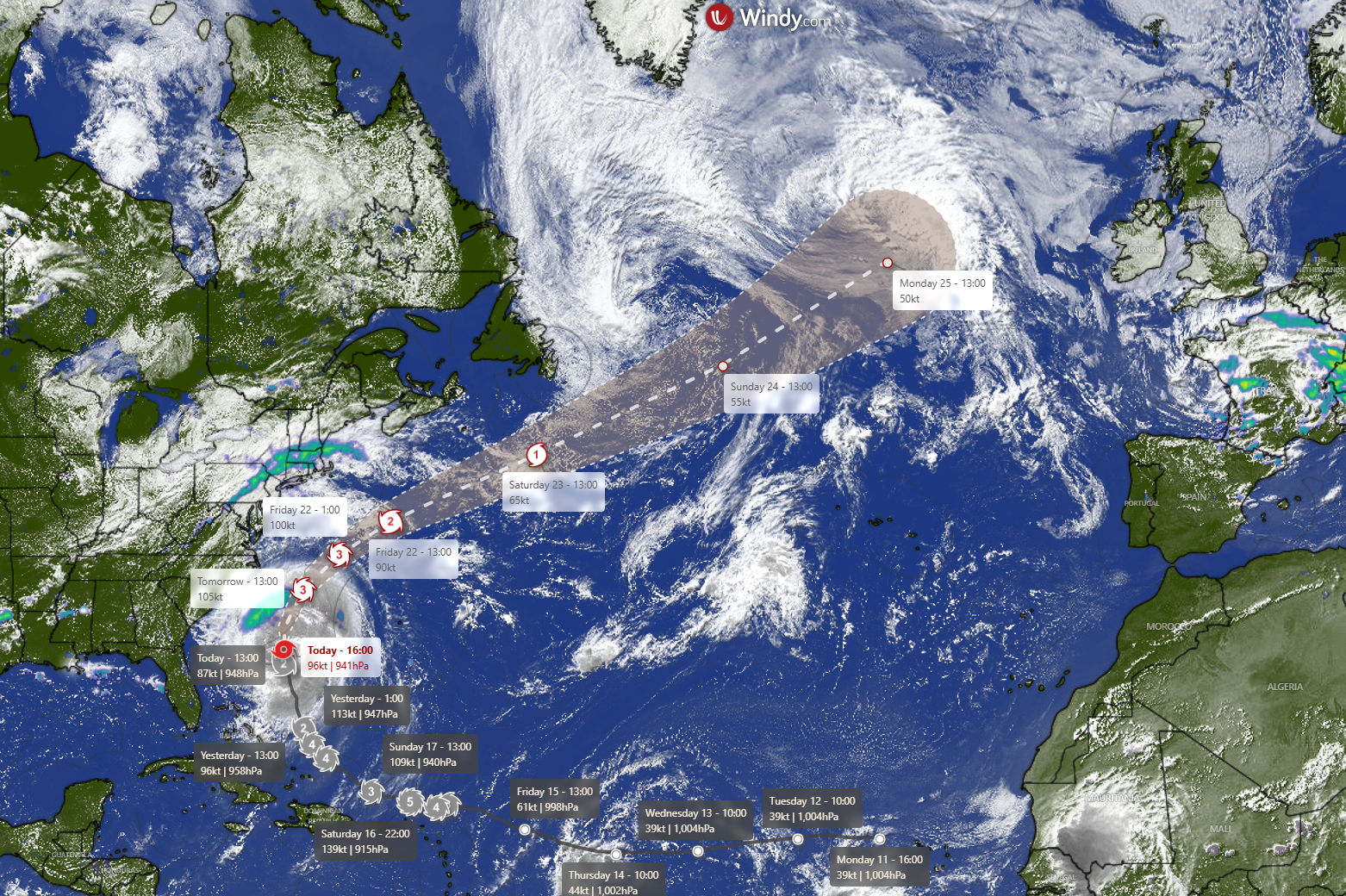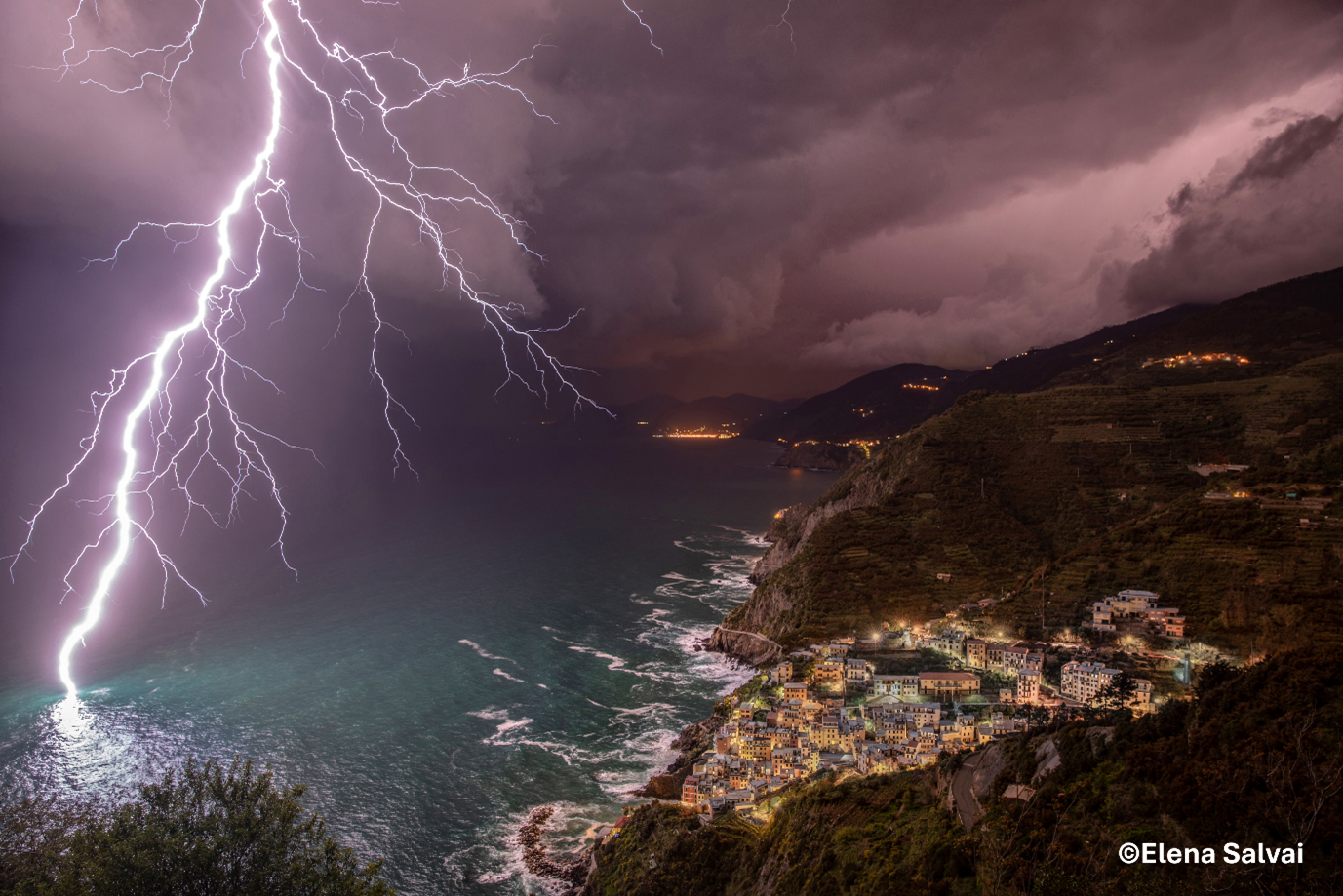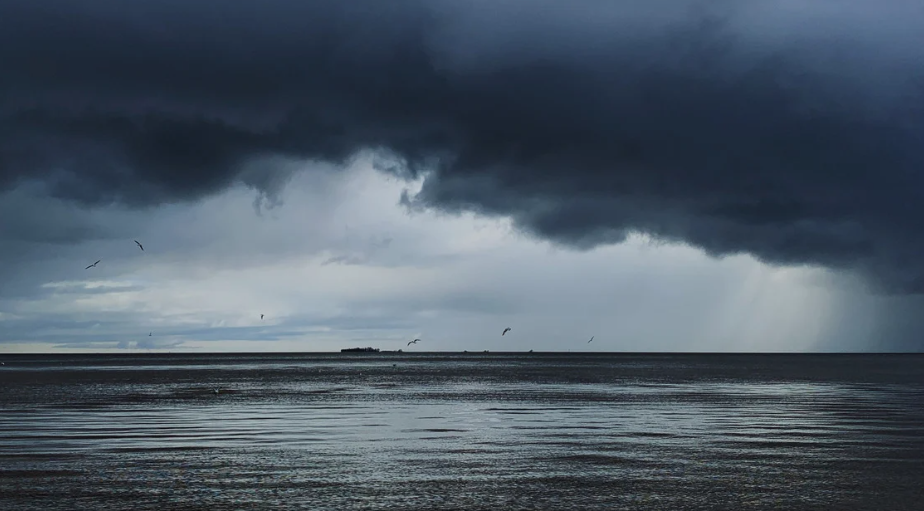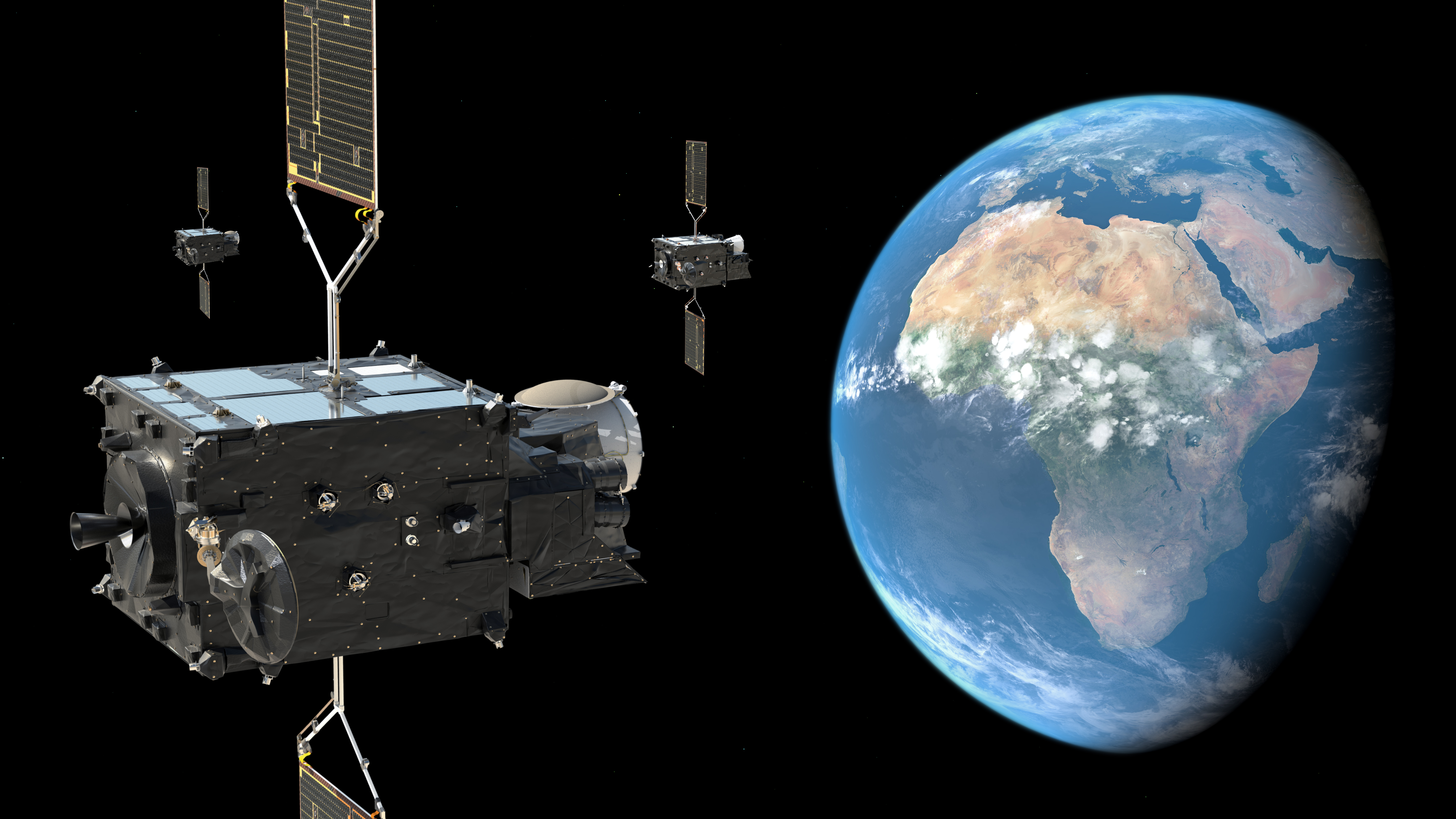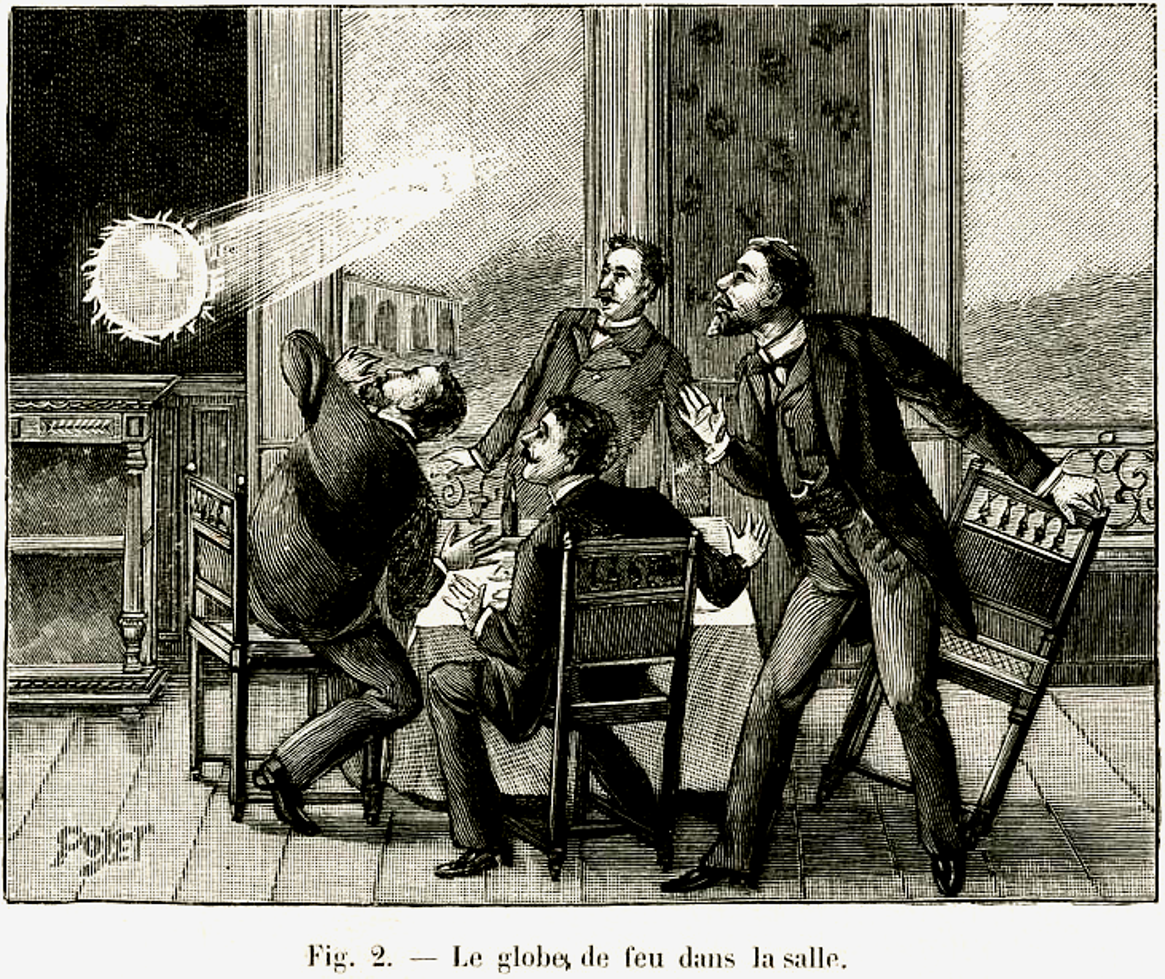

Ball Lightning
Kath Egerton enjoys spectacular views over the Howgills and Lake District hills from her house in Cumbria. The house sits on a south-facing hillside with extensive open views, which gives a prime position for observing the changing skies. She has also spent 22 years in the Trossachs, near Stirling, studying wildlife, including 13 years observing golden eagles during their breeding seasons and protecting them from egg thieves. Kath, as you can imagine, has experienced some interesting weather conditions. However, on the evening of Saturday 27 July 2013, Kath experienced something quite peculiar.
"We had a thunderstorm lasting maybe 20 minutes, and when it seemed to be over, I went to feed the hens, carrying their food in 2 metal dishes," Kath said. "I went through the gate into the field and after closing the gate turned round and saw a glow of light on the grass. It looked like bright sunlight and was about 60cms in diameter. Almost immediately, a slightly larger bright orangey-yellow light passed rapidly in front of me from right to left at the same level as the dishes I was carrying and probably a metre in front of me. Then there was an incredibly loud noise which sounded like a clap of thunder directly above me at tree height, and the light had gone." The ball of light was described as bright sunlight, yet Kath explains that at the time of the observation, "There was no sun."
One possible explanation for Kath’s experience is that she had witnessed the rare phenomenon known as ball lightning. Everyone is familiar with standard fork lightning. We know it’s an atmospheric electrical discharge. And we know how it arrives―typically, the bottom of a cloud sends out a stream of negatively charged particles, known as a ‘leader’, which seeks an area with a positive charge either in another cloud or on the ground. As the leader approaches a positively charged area, a positively charged streamer emerges, meeting the leader, sealing the connection, and generating a bolt of lightning. We know fork lightning forms in storm clouds, volcanic ash clouds and the dust clouds above huge forest fires. We have millions of pictures and many hours of video to pore over. However, ball lightning is rarely observed and much less well understood. It is estimated that only one in a million lightning strikes produces the ball lightning phenomenon. Despite this, there are more than 10,000 written accounts of the bright, spherical lights in the sky, which linger for seconds longer than a true lightning bolt.
Take the Great Thunderstorm at a church in Widecombe-in-the- Moor, Devon, on 21st October 1638, four people reportedly died, and approximately 60 were injured when a 2.4m ball of fire was described as striking and entering the church, nearly destroying it, smashing pews and windows and filling the church with a foul sulphurous odour and dark, thick smoke. The explanation at the time was that the ball of fire was ‘the devil’ or the ‘flames of hell’. Or this―on 6th August 1944, a ball of lightning smashed through a closed window in Uppsala, Sweden, leaving a circular hole about 5cm in diameter. It passed through the kitchen, leaving the startled family members untouched, and out the other side of the house. The incident was witnessed by residents in the area and was recorded by a lightning strike tracking system at the Division for Electricity and Lightning Research at Uppsala University.
People have told tales about something resembling ball lightning for hundreds if not thousands of years. In his 1864 US edition of A Guide to the Scientific Knowledge of Things Familiar, Ebenezer Cobham Brewer discusses globular lightning. He describes it as slow-moving balls of fire or explosive gas that sometimes fall to the earth or run along the ground during a thunderstorm. He explains that the balls sometimes split into smaller balls and may explode ‘like a cannon’. According to other accounts, ball lightning ranges in size from a golf ball to a small car. It can hover in the air, roll along the ground or come crashing through a window. It lasts between a few seconds and a couple of minutes. It can simply disappear or violently explode.
Kath’s recent observation fits well with previous ball lightning sightings descriptions. Kath explained, "It was approximately 8:30 pm, and I was facing in an NNE direction when I saw the glow and the light flash past. The field I was stood in is about half an acre with large trees on three sides and overhead electricity wires crossing from two telegraph poles. There are farm buildings on one side next to the land and a pipe going underground to a soakaway from a septic tank. There is also an old disused underground pipe to a water trough directly in line with the path taken by the light. I was not aware of any rain during the thunderstorm. The grass appeared to be dry. The three hens were standing at the gate and were not wet. They showed no signs of panic during the fleeting incident and were jumping up and down as usual to reach the food, which made me assume that they didn't experience any strange effects. There was no more thunder or lightning after this happened, and I did not see any lightning before the glow appeared"
Kath has reported her observation to the Tornado and Storm Research Organisation (TORRO), an organisation that specialises in data collection, site investigations and climatological research.
Some scientists have studied ball lightning for decades and still aren’t sure whether it exists. One explanation offered by sceptics is that ball lightning is merely a positive after-image left on the eye in the wake of a standard lightning flash. But the prevailing physical theory of ball lightning is called the atmospheric maser theory. Electrical activity puts large clouds of charged water molecules into an excited state, briefly causing light amplification by stimulated emission of radiation, or the laser effect. But before this can be confirmed as the cause of the phenomenon, the process must be replicated in a laboratory.
According to some reports, the famous physicist and inventor Nikola Tesla was able to make ball lightning in his lab when he was based in Colorado Springs in 1899/1900. But if he did create it, he did not describe his methods in a way that has allowed anyone since to reproduce his work. Russian scientists successfully made plasma balls in the lab in 2002 — catching the attention of Mike Lindsay, then a student at the U.S. Air Force Academy, who wondered if he could recreate and study the phenomenon. Now Lindsay is leading a team of researchers who aim to produce a kind of ball lightning in the lab. The Colorado team made brilliant clouds of plasma emerge from a specially prepared solution and maintained them for nearly half a second, and the study was published in the June issue of the Journal of Physical Chemistry. Dr Lindsay said, "Ball lightning is used almost generically to describe phenomena seen in nature that aren't described by normal lightning, bead lightning or things like 'St Elmo's fire', or aurora. And likely it's not one thing but several things that have similar observables."
In the paper, Lindsay and his colleagues describe previous research that generated what they refer to as a "glow discharge" of plasma (a charged gas) above an electrolyte solution. Dr Lindsay explained ‘I don't think what we've created is lightning, although the initial stages of the electrical discharge that produce this 'plasmoid' have many similarities to lightning. They're just electric arcs - in this case, electric arcs to the surface of this solution of electrolytes. And then what happens is this plasmoid emerges from it.’
The scientists used imagining techniques to look at the infra-red profile of the balls and how their density and structure changed over time. The results suggest water vapour and carbon dioxide are present within the balls.

